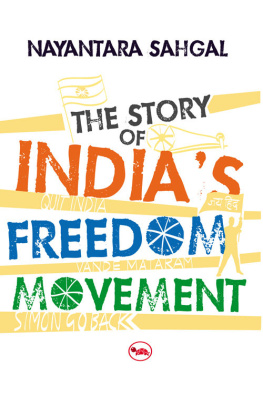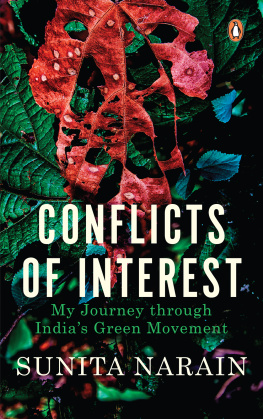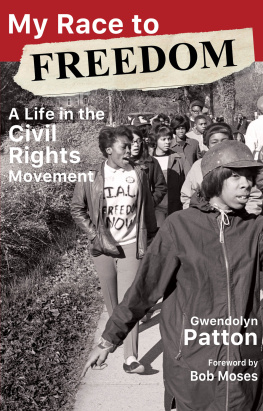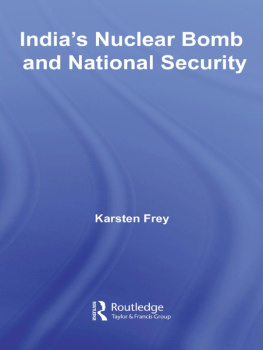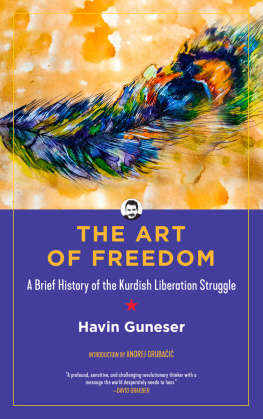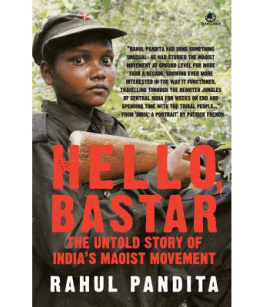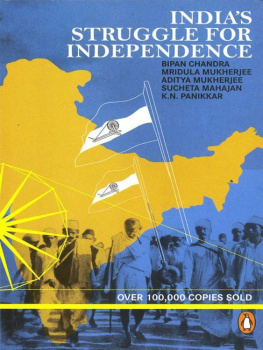Sahgal - The Story of Indias Freedom Movement
Here you can read online Sahgal - The Story of Indias Freedom Movement full text of the book (entire story) in english for free. Download pdf and epub, get meaning, cover and reviews about this ebook. year: 2013, publisher: Rupa/Red Turtle Publications, genre: Politics. Description of the work, (preface) as well as reviews are available. Best literature library LitArk.com created for fans of good reading and offers a wide selection of genres:
Romance novel
Science fiction
Adventure
Detective
Science
History
Home and family
Prose
Art
Politics
Computer
Non-fiction
Religion
Business
Children
Humor
Choose a favorite category and find really read worthwhile books. Enjoy immersion in the world of imagination, feel the emotions of the characters or learn something new for yourself, make an fascinating discovery.
The Story of Indias Freedom Movement: summary, description and annotation
We offer to read an annotation, description, summary or preface (depends on what the author of the book "The Story of Indias Freedom Movement" wrote himself). If you haven't found the necessary information about the book — write in the comments, we will try to find it.
Sahgal: author's other books
Who wrote The Story of Indias Freedom Movement? Find out the surname, the name of the author of the book and a list of all author's works by series.
The Story of Indias Freedom Movement — read online for free the complete book (whole text) full work
Below is the text of the book, divided by pages. System saving the place of the last page read, allows you to conveniently read the book "The Story of Indias Freedom Movement" online for free, without having to search again every time where you left off. Put a bookmark, and you can go to the page where you finished reading at any time.
Font size:
Interval:
Bookmark:
Nayantara Sahgal is the author of nine novels, six works of non-fiction and wide-ranging literary and political commentary. She has received the Sahitya Akademi Award, the Sinclair Prize and the Commonwealth Writers Prize. She is a member of the American Academy of Arts and Sciences, has a Distinguished Alumna Award from Wellesley College, USA, and Woodstock School, India, and an Honorary Doctorate of Letters from the University of Leeds. In 2011, she received the Nanjanagudu Thirumalamba Award for her contribution to Indian literature, and in 2009, Zee TV's Awadh Samman. A resident of Dehradun, she has also been awarded the Doon Ratna.

Published in Red Turtle by
Rupa Publications India Pvt. Ltd. 2013
7/16, Ansari Road, Daryaganj
New Delhi 110002
Sales Centres:
Allahabad Bengaluru Chennai
Hyderabad Jaipur Kathmandu
Kolkata Mumbai
Copyright Nayantara Sahgal 1970, 2013
Illustration copyright Rupa Publications India Pvt. Ltd.
First published by National Council of
Educational Research and Training, 1970
eISBN: 9788129131782
All rights reserved.
No part of this publication may be reproduced, transmitted, or stored in a retrieval system, in any form or by any means, electronic,
mechanical, photocopying, recording or otherwise,
without the prior permission of the publisher.
10 9 8 7 6 5 4 3 2 1
The moral right of the author has been asserted.
Typeset in Book Antiqua 12.5/19.2
Printed by Replika Press Pvt. Ltd., Haryana
This book is sold subject to the condition that it shall not,
by way of trade or otherwise, be lent, resold, hired out, or otherwise circulated, without the publishers prior consent, in any form of binding
or cover other than that in which it is published.

e take our freedom for granted. We understand now that every person is important, that each person is different from all others and has the right to decide for himself how his life is to be led. Yet it was not always natural to believe this. There was a time when slavery was accepted as a natural state of affairs. Some men were free and others slaves, and no one thought this strange. In ancient Italy, for example, there were three slaves for every free man. The free men lived in comfort and governed the land. The slaves laboured on plantations and in households, and were often brutally treated by their masters. In every ancient civilization, it was the slaves hard work that built great monuments and made progress possible.

There is a famous statue of a Scythian slave sharpening a knife. His body is bent and he seems to represent the suffering of millions in the past. Yet he is looking upward, as if towards the light, reminding us that the longing to be free is as old as the institution of slavery.
There was never a time when men did not yearn to be free. History is full of stirring examples of this urge. One of the earliest and most dramatic of these is the slave uprising that took place in the Roman Empire in 73 BCE. It was led by Spartacus, a slave who escaped from a school for gladiators at Capua. He fled to Mount Vesuvius, where he collected an army of runaway slaves like himself. For two years, he and his followers put up a desperate fight, defeating every army that Rome sent against them, but the rebellion was finally crushed. Spartacus was killed and six thousand of his followers were crucified along the Appian Way in Rome.

There are countless examples of men like Spartacus who fought to free themselves from oppression. There were othersthinkers, philosophers and scientistswho fought for freedom of the mind and spirit from the tyranny of the rigid beliefs of their time. Socrates, the Athenian, was condemned to death because he would not give up his right to speak what he believed was the truth. Galileo, to whom modern physics owes its beginnings, was the first astronomer to use a telescope. He saw the mountains and craters on the moon, discovered four satellites of Jupiter, and realized that the Milky Way is a collection of stars. We know all these as facts now, but in 1632, they were considered heresy, that is, going against the beliefs of the Christian church. Galileo was called before the religious court. He was made to go down on his knees and take back what he believed, and sentenced to live a lonely, isolated life. But he continued to work on his discoveries till he died ten years later.
It is because of men and women like these, and their determination to live and think freely no matter what, that the struggle for freedom has gone on through history. Because of them, we can take freedom for granted today and believe that it is our right to exercise it. Yet, individual freedom cannot be properly exercised if a country is not free. Every country has its own heritage and achievements of which it is proud, which it wants to pass on to each new generation. Every country is best fitted to make plans for its own future, because it is more concerned with its peoples needs than any foreign government can ever be. Only in a free country can men and women direct their lives and achieve the best of which they are capable.
But freedom from a foreign power, or political freedom, is only a starting point. The greatest Indian of our time, Mahatma Gandhi, believed that freedom would be a reality only when we had succeeded in wiping the tear from every eye, and when every citizen has the opportunity to live with dignity.
This book tells the story of Indias struggle for freedom. To understand it we have to go back in time to more than two hundred years ago. We must begin with the establishment of British rule on our soil, discover how a foreign power became so dominant in our country, and then trace the efforts that brought us our independence.
The Fall of the Mughal Empire

he year was 1707. Aurangzeb, the last of the great Mughal emperors, was dead and the stage was set for a struggle to seize the prize he had left: India. There was no single power strong enough to take it. Aurangzebs own descendants were too weak to exercise any real authority. The Marathas and the Sikhs were steadily growing in power and eyeing the prize and so were two nations from across the seasEngland and Francewho had also become increasingly powerful.
The English and the French had come to India as merchants but had become involved with the quarrels of local rulers. For example, whenever there was a disputed succession in the South, the English would back one candidate to the throne, and the French the other, and both would lend out their trained troops to the warring sides. After the war, they would seize whatever they could in wealth and territory.
At this time, invaders were also waiting beyond Indias north-west frontier, ready to march down into the rich plains and plunder. It was a time of trouble and turmoil, and an ideal opportunity for adventurers, both Indian and foreign.
Font size:
Interval:
Bookmark:
Similar books «The Story of Indias Freedom Movement»
Look at similar books to The Story of Indias Freedom Movement. We have selected literature similar in name and meaning in the hope of providing readers with more options to find new, interesting, not yet read works.
Discussion, reviews of the book The Story of Indias Freedom Movement and just readers' own opinions. Leave your comments, write what you think about the work, its meaning or the main characters. Specify what exactly you liked and what you didn't like, and why you think so.

